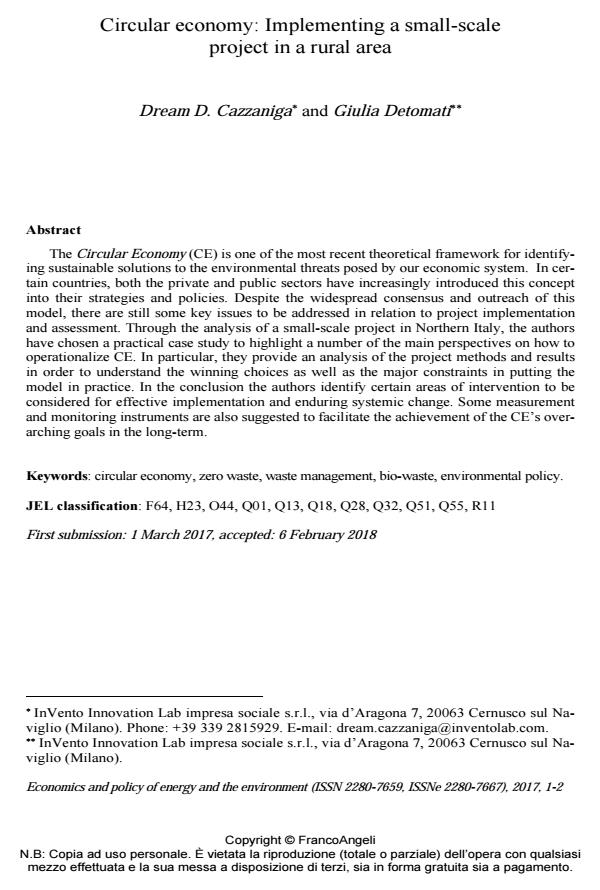Circular economy: Implementing a small-scale project in a rural area
Titolo Rivista ECONOMICS AND POLICY OF ENERGY AND THE ENVIRONMENT
Autori/Curatori Dream D. Cazzaniga, Giulia Detomati
Anno di pubblicazione 2017 Fascicolo 2017/1-2
Lingua Inglese Numero pagine 27 P. 191-217 Dimensione file 1290 KB
DOI 10.3280/EFE2017-001010
Il DOI è il codice a barre della proprietà intellettuale: per saperne di più
clicca qui
Qui sotto puoi vedere in anteprima la prima pagina di questo articolo.
Se questo articolo ti interessa, lo puoi acquistare (e scaricare in formato pdf) seguendo le facili indicazioni per acquistare il download credit. Acquista Download Credits per scaricare questo Articolo in formato PDF

FrancoAngeli è membro della Publishers International Linking Association, Inc (PILA)associazione indipendente e non profit per facilitare (attraverso i servizi tecnologici implementati da CrossRef.org) l’accesso degli studiosi ai contenuti digitali nelle pubblicazioni professionali e scientifiche
The Circular Economy (CE) is one of the most recent theoretical framework for identi-fying sustainable solutions to the environmental threats posed by our economic system. In certain countries, both the private and public sectors have increasingly introduced this concept into their strategies and policies. Despite the widespread consensus and outreach of this model, there are still some key issues to be addressed in relation to project implementation and assessment. Through the analysis of a small-scale project in Northern Italy, the authors have chosen a practical case study to highlight a number of the main perspectives on how to operationalize CE. In particular, they provide an analysis of the project methods and results in order to understand the winning choices as well as the major constraints in putting the model in practice. In the conclusion the authors identify certain areas of intervention to be considered for effective implementation and enduring systemic change. Some measurement and monitoring instruments are also suggested to facilitate the achievement of the CE’s overarching goals in the long-term.
Parole chiave:Circular economy, zero waste, waste management, bio-waste, environmental policy
Jel codes:F64,H23,O44,Q01,Q13,Q18,Q28,Q32,Q51,Q55,R11
- The battle of the buzzwords: A comparative review of the circular economy and the sharing economy concepts Marvin Henry, Daan Schraven, Nancy Bocken, Koen Frenken, Marko Hekkert, Julian Kirchherr, in Environmental Innovation and Societal Transitions /2021 pp.1
DOI: 10.1016/j.eist.2020.10.008
Dream D. Cazzaniga, Giulia Detomati, Circular economy: Implementing a small-scale project in a rural area in "ECONOMICS AND POLICY OF ENERGY AND THE ENVIRONMENT" 1-2/2017, pp 191-217, DOI: 10.3280/EFE2017-001010